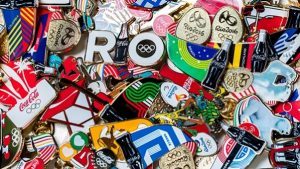
Sid Marantz is no stranger to the thrill of the Olympic Games.
As a teenager in 1960, Marantz attended his first Olympic and Paralympic Games in Rome with his family. Returning to the Olympics in 1976 in Montreal, he was introduced to what was become the unofficial spectator sport of the Games: pin badge trading.
Olympic pin badges were first created for the 1896 Olympic Games in Greece. The original pins were cardboard disks that identified judges, athletes and officials. It wasn’t until the 1980 Olympic Games in Moscow, however, that pin trading began catching on with fans, making Marantz’s first few pins priceless keepsakes.
Now, 40 years later, Marantz’s collection totals more than 12,000 pins. And he has no plans to slow down.
As he prepares to travel to Rio de Janeiro for his 16th Olympic and Paralympic Games, he’s focused on diversifying his collection. Fueled by the prospect of securing sought-after pins, Marantz enjoys the thrill of the hunt, especially for National Olympic Committee (NOC) pins. NOC pins are badges specific to athletes and coaches that can only be acquired by trading with an athlete. They are not available for purchase, making them more desirable for traders.
Read Samantha Stoner and Hannah Nemer‘s full story here.




